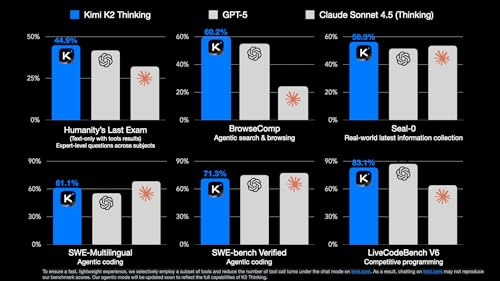This is the first of a handful of interviews I’m doing with teams building the best open language models of the world. In 2025, the open model ecosystem has changed incredibly. It’s more populated, far more dominated by Chinese companies, and growing. DeepSeek R1 shocked the world and now there are a handful of teams in China training exceptional models. The Ling models, from InclusionAI — Ant Group’s leading AI lab — have been one of the Chinese labs from the second half of the year that are releasing fantastic models at a rapid clip. This interview is primarily with Richard Bian, who’s official title is Product & Growth Lead, Ant Ling & InclusionAI (on LinkedIn, X), previously leading AntOSS (Ant Group’s open source software division). Richard spent a substantial portion of his career working in the United States, with time at Square, Microsoft, and an MBA from Berkeley Haas, before returning to China and work at Ant.Also joining are two leads of the Ant Ling technical team, Chen Liang (Algorithm Engineer), and Ziqi Liu (Research Lead).This interview focuses on many topics of the open language models, such as:* Why is the Ant Group — known for the popular fintech app AliPay — investing so much in catching up to the frontier of AI?* What does it take to rapidly gain the ability to train excellent models?* What decisions does one make when deciding a modeling strategy? Text-only or multimodal? What size of models?…* How does the Chinese AI ecosystem prioritize different directions than the West?And many more topics. Listen on Apple Podcasts, Spotify, YouTube, and where ever you get your podcasts. For other Interconnects interviews, go here.Some more references & links:* InclusionAI’s homepage, highlighting their mission.* AntLingAGI on X (models, research, etc.), InclusionAI on X (overall initiative), InclusionAI GitHub, or their Discord community.* Ling 1T was highlighted in “Our Picks” for our last open model roundup in October.* Another interview with Richard at State of Open Conference 2025.* Over the last few months, our coverage of the Chinese ecosystem has taken off, such as our initial ranking of 19 open Chinese AI labs (before a lot of the models we discuss below), model roundups, and tracking the trajectory of China’s ecosystem. An overview of Ant Ling & Inclusion AIAs important context for the interview, we wanted to present an overview of InclusionAI, Ant’s models, and other efforts that emerged onto the scene just in the last 6-9 months. To start — branding.Here’s a few screenshots of InclusionAI’s new website. It starts with fairly standard “open-source AI lab messaging.”Then I was struct by the very distinct messaging which is surprisingly rare in the intense geopolitical era of AI — saying AI is shared for humanity.I expect a lot of very useful and practical messaging from Chinese open-source labs. They realize that Western companies likely won’t pay for their services, so having open models is their only open door to meaningful adoption and influence.Main models (Ling, Ring, & Ming)The main model series is the Ling series, their reasoning models are called Ring, and their Multimodal versions are called Ming. The first public release was Ling Plus, 293B sparse MoE in April. They released the paper for their reasoning model in June and have continued to build on their MoE-first approach.Since then, the pace has picked up significantly. Ling 1.5 came in July.Ling (and Ring) 2.0 came in September of this year, with a 16B total, 2B active mini model, an 100B total, 6B active flash model, and a big 1T total parameter 50B active primary model. This 1T model was accompanied by a substantial tech report on the challenges of scaling RL to frontier scale models. The rapid pace that Chinese companies have built this knowledge (and shared it clearly) is impressive and worth considering what it means for the future.Eval scores obviously aren’t everything, but they’re the first step to building meaningful adoption. Otherwise, you can also check out their linear attention model (paper, similar to Qwen-Next), some intermediate training checkpoints, or multimodal models.Experiments, software, & otherInclusionAI has a lot of projects going in the open source space. Here are some more highlights:* Language diffusion models: MoEs, sizes similar to Ling 2.0 mini and flash (so they likely used those as base). Previous versions exist. * Agent-based models/fine-tunes, Deep Research models, computer-use agentic models.* GroveMoE, MoE arch experiments.* RL infra demonstrations (Interestingly, those are dense models)* AWorld: Training + general framework for agents (RL version, paper)* AReal: RL training suite Interconnects is a reader-supported publication. Consider becoming a subscriber.Chapters* 00:00:00 A frontier lab contender in 8 months* 00:07:51 Defining AGI with metaphor* 00:20:16 How the lab was born* 00:23:30 Pre-training paradigms* 00:40:25 Post training...
続きを読む
一部表示
 38 分
38 分 2025/12/101 時間 2 分
2025/12/101 時間 2 分 11 分
11 分 2025/11/178 分
2025/11/178 分 2025/11/121 時間 18 分
2025/11/121 時間 18 分 2025/11/068 分
2025/11/068 分 2025/10/2510 分
2025/10/2510 分 2025/10/2013 分
2025/10/2013 分
